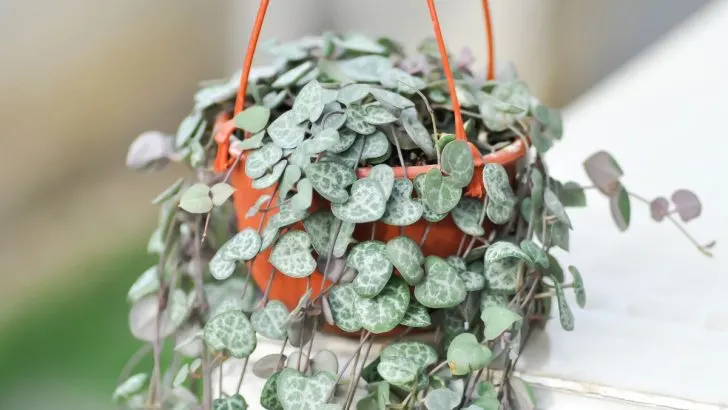In this article, you will learn how to grow a string of hearts plant, which is also called Ceropegia woodii or Rosary Vine.
The string of hearts plant with heart-shaped leaves is a semi-succulent plant. It is a heart-shaped plant. These plants do not tolerate high humidity.
As a succulent mix, they prefer a drier soil. If they are in too wet soil for a while, it is very likely that they will rot. In essence, the string of hearts plant is one very tolerant plant to maintain.
What Does The String Of Hearts Plant Look Like?
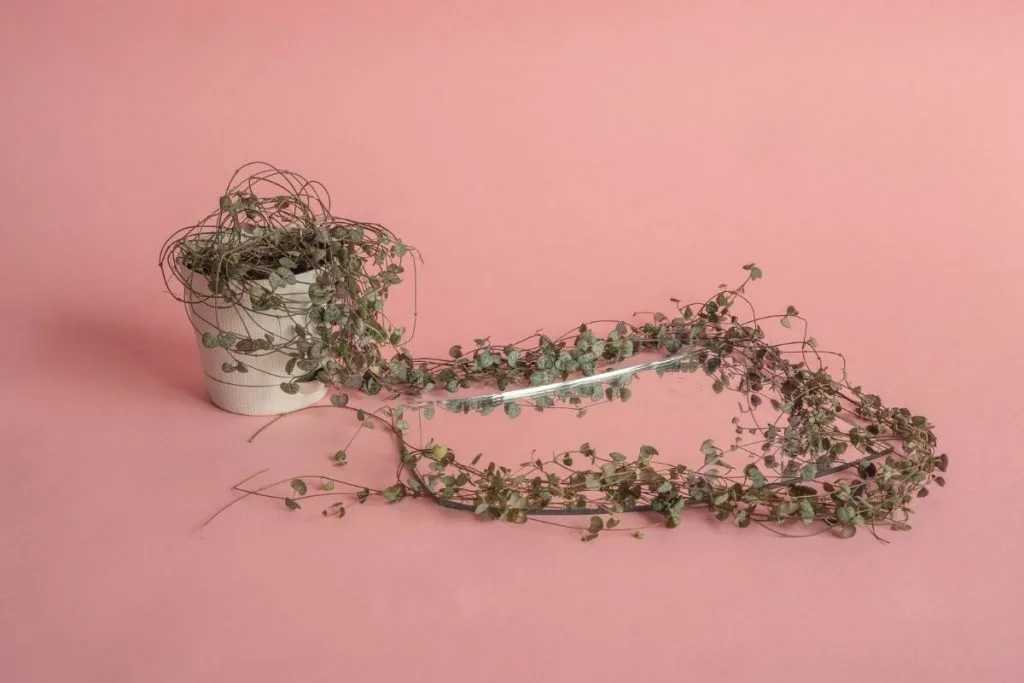
It is an unusual hanging plant that delights with its appearance. The patterned leaves are heart-shaped, dark green with patterns that can be cream, silver, or pink.
It has purple stems that grow 2 to 3 inches in height, but the length of the string of hearts plant can be up to 9 feet in length. Variations of the string of hearts have purple petals.
It’s really amazing. Some say it resembles a waterfall because of its appearance. Because of the length, it can reach, you should plant it in a pot that is very high, maybe even better to hang it on the ceiling so they can go down walls.
Plant flowers can appear in summer and in fall. They are kind of odd-looking. The shape of the plant flowers is like a vase with a long neck. In combination with the dark green marbled plant body, the pink plant flowers are really beautiful.
Where Is It Best To Grow A String Of Hearts?
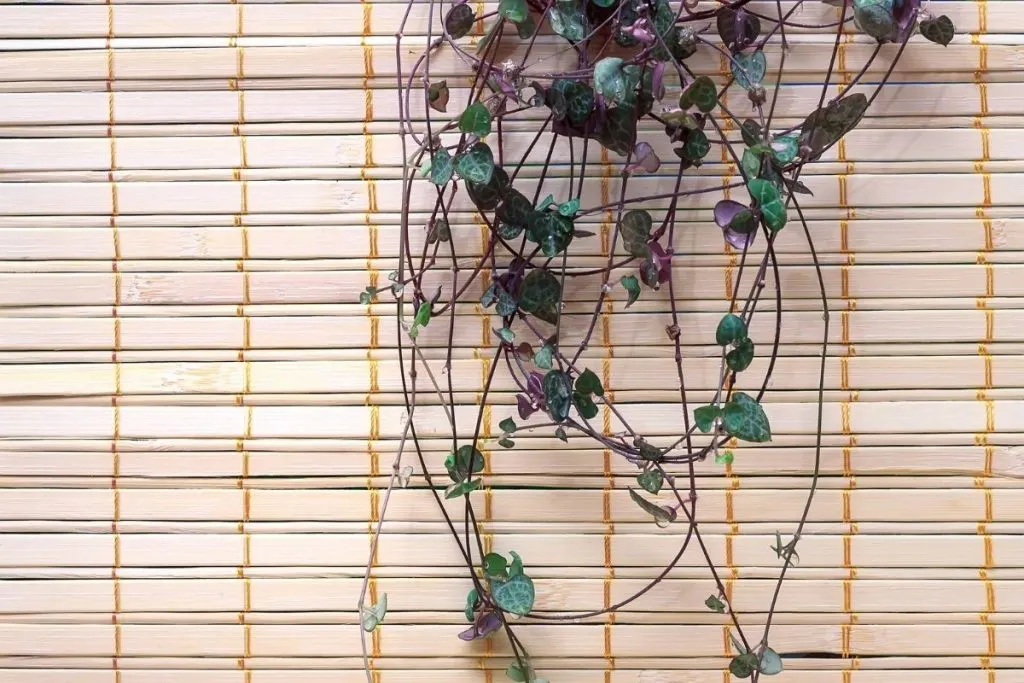
You will not go wrong if you keep the string of hearts indoors or outdoors. Succulents can tolerate both. There are only a few things you need to pay attention to if you decide to grow it outdoors.
The string of hearts, like other succulents, does not tolerate direct sunshine. This can affect hearts plants by burning the leaves and they become dry, brown, and dull.
Also, too much sunlight can cause crispy leaves. If you decide to keep it outdoors permanently, make sure the air temperature in the place where it is located throughout the year is 60 or more than 60 Fahrenheit. If that is not the case, plant it in a pot so you can transfer the string of hearts indoors when the outdoor temperature is below this temperature.
Also, if it is grown outdoors, you can plant it in a way that it comes down from the walls or cover the ground. You just have to make sure that it will not be reached by strong direct sun.
If you keep the string of hearts in the house from time to time, and then you intend to take it outside, you must first gradually acclimatize it to stronger light.
If you keep it in the house permanently, it is important that it is not in direct sun, but it is also important that it gets light. Simply, it needs bright indirect light.
If there is a lack of light, it can also cause some problems and changes in the hearts plants. The leaves can change color, and the water can stay in the soil longer this will lead to excessive watering, and unfortunately cause root rot.
Does My String Of Hearts Get Enough Light And Does The Temperature Suit It?

As already mentioned, succulents do not tolerate direct sunlight, and they prefer warm temperatures.
The temperature of the room in which it is located should be between 80 and 85 Fahrenheit during the year, and 60 F during the winter.
It would be best to place it near a lighted western-facing window. If it is outside, place it in the shaded area.
From all the above, you can conclude that the string of hearts is suitable for a lot of light and a lot of heat. The only problem is that direct sunlight, which is a combination of both, can directly affect the health and appearance of the plant.
The String Of Hearts Plant And Bright Indirect Light
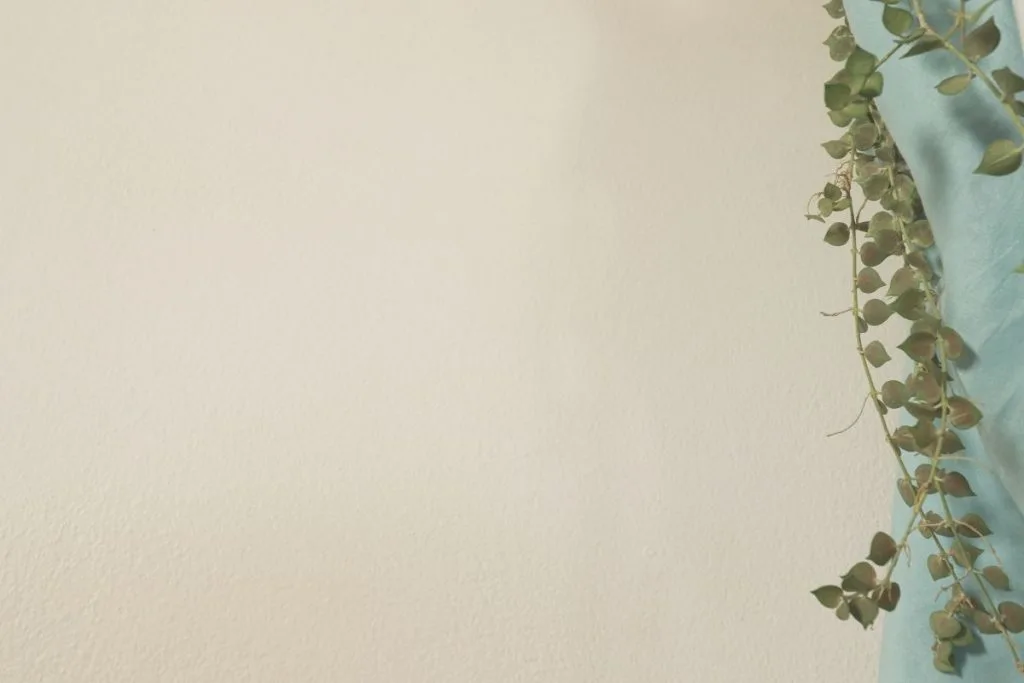
You can check this without being an expert on plants. If you want to make sure your string of hearts gets enough bright light, you can check it out this way.
If you notice that the leaves of the string of hearts have become pale, that is, that the marble streak is missing, that is one of the signs.
Also, if they are wider than usual, make sure to move your string of hearts to a location where there is more light, but definitely not where there is too much direct sun.
What is important to add, and you probably know that you should rotate the string of hearts from time to time.
In this way, the light reaches all sides of the string of hearts and thus allows all parts to develop equally.
What Humidity Suits This Plant?
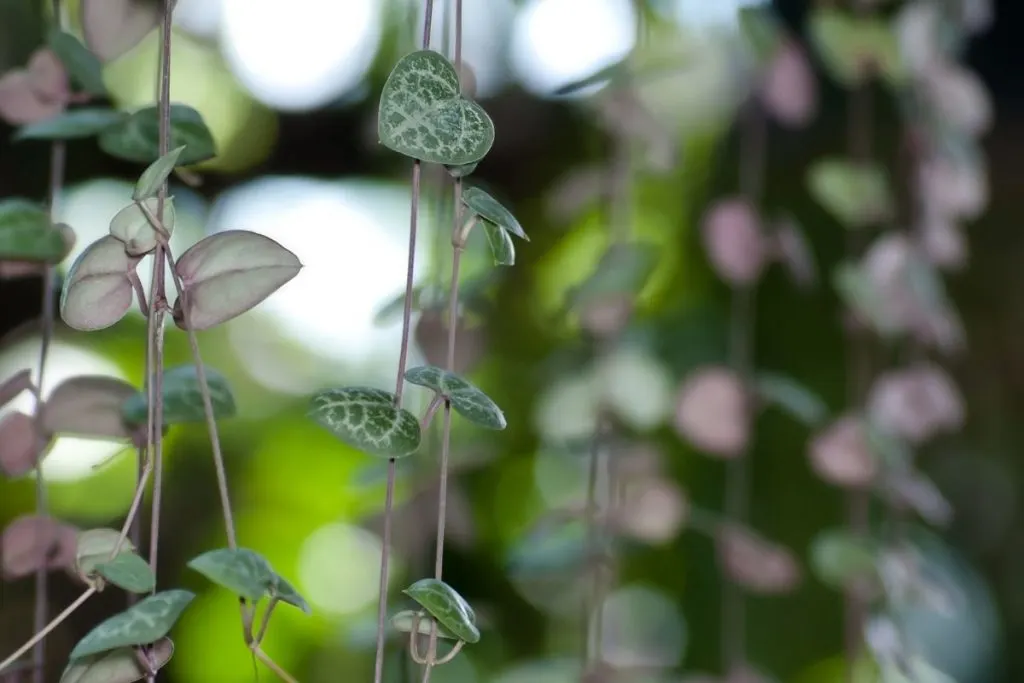
All succulents can survive in areas where there is not enough moisture, but it does not necessarily mean that they do not like it.
The ideal conditions for placing this type of plant would be where it will receive between 40% to 50% humidity.
How To Water The String Of Hearts Properly And Prevent Root Rot?
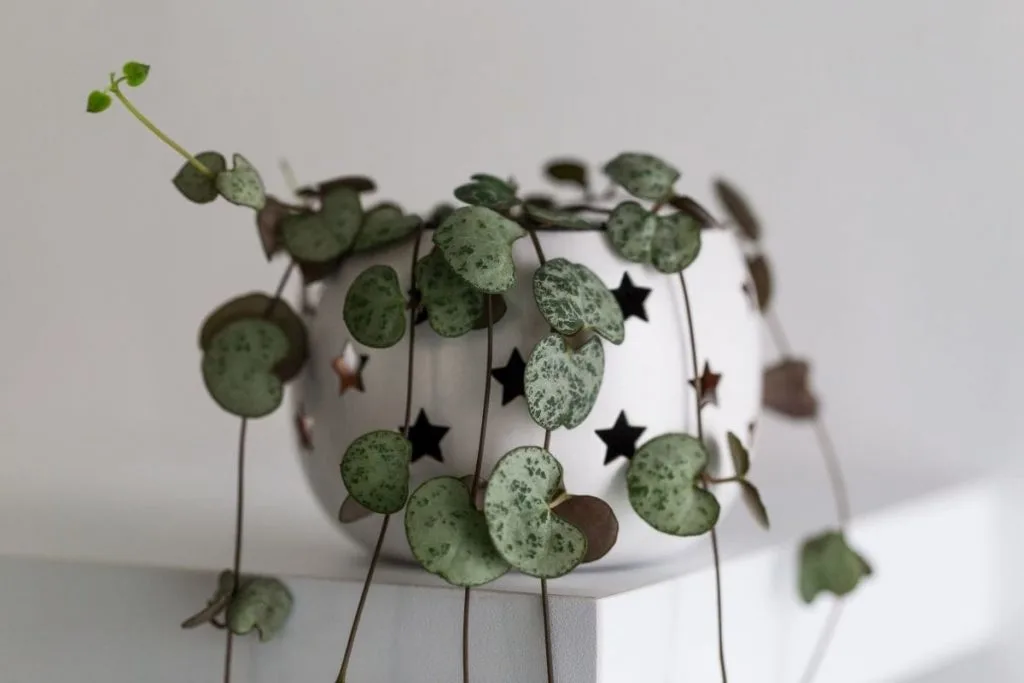
Since the string of hearts does not tolerate too wet soil, to prevent and avoid root rot it is best to do it the following way.
Instead of the standard way of watering the string of hearts, we recommend that you immerse the pot in water once a week in order to soak it well, ie. so that the plant itself can take in as much water as it needs.
If during the spring and summer you notice that the upper part of the soil is completely dry, you can soak it even then because this is often the case due to higher temperatures.
And during the winter, you only need to do this every three to four weeks. Always check if the soil is completely dry. Because string of hearts plants store water briefly, if at all. Mostly it is keeping the soil dry.
How Do I Soak A Flowerpot?
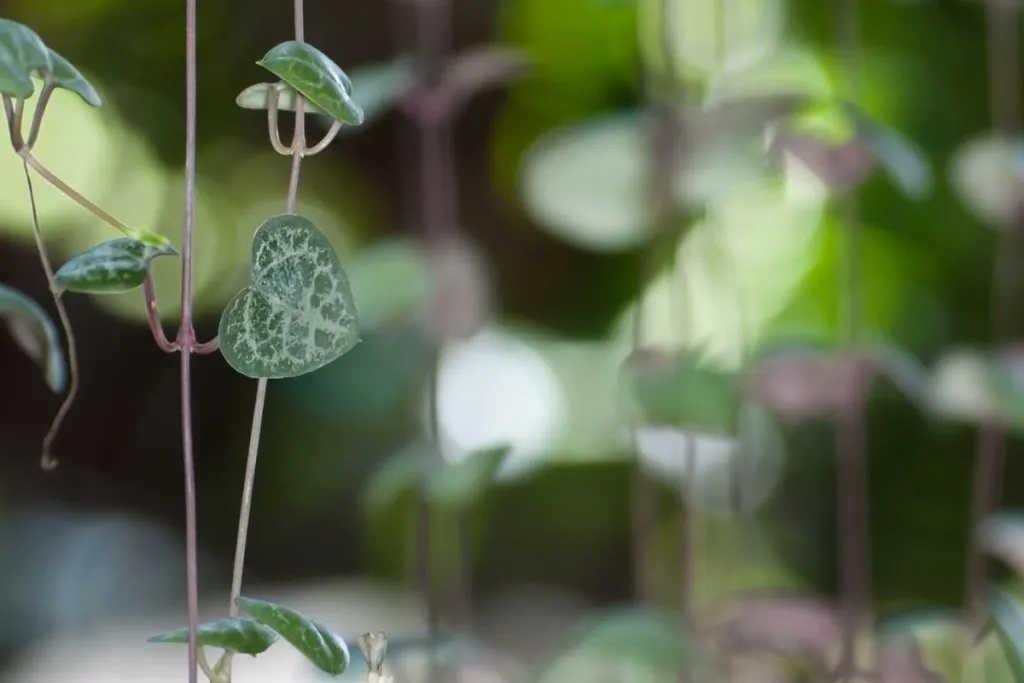
The string of hearts will get enough water if you water it this way. It suits it best to draw water from below through the drainage hole.
This way it will grow equally and you will have a happy and healthy new plant.
You will do this by placing a deeper container in which you will pour as much water as needed to cover 1/4 of the pot you want to soak.
With adequate drainage and regular soaking of the pot, string of hearts plant will be happy.
Put a pot with a string of hearts plant in it, leave it for 10 minutes, and then leave it to drain well to prevent root rot. That’s pretty much it, not as demanding as some other house plants.
It really doesn’t require much effort due to its succulent-like nature.
How To Recognize If The Plant Is Watered Enough?
The way you can check this is to simply touch the leaves. If the leaves are soft when you squeeze them lightly, your plant lacks water and needs to be soaked.
If the leaves are firm the string of hearts plant has enough water.
Should I Use Fertilizer?
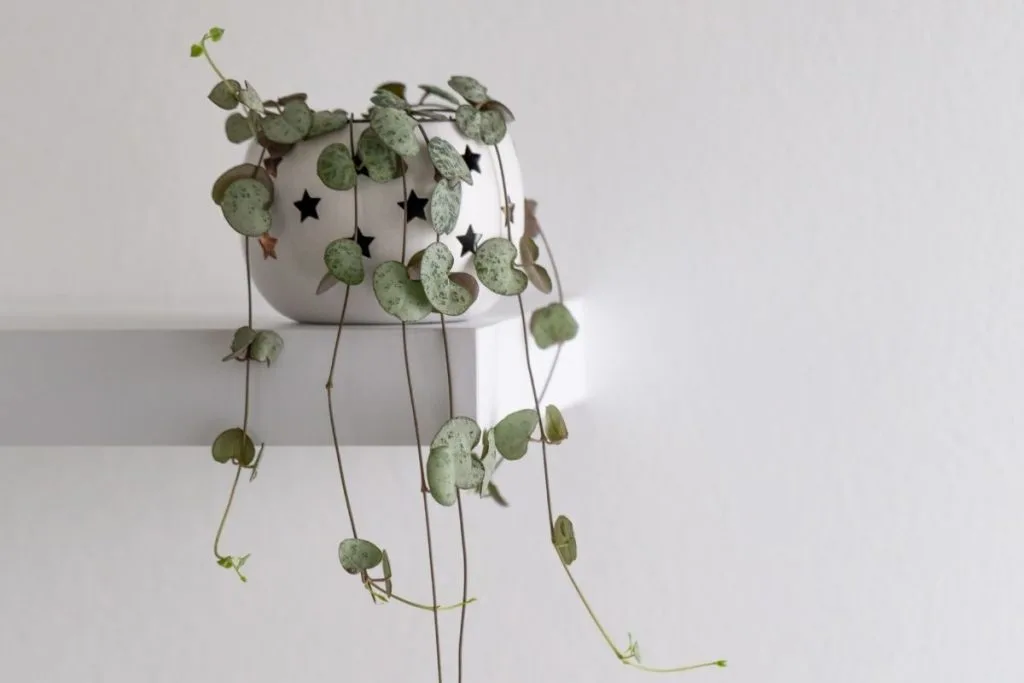
And when it comes to fertilizer, the string of hearts is not demanding. During the growing season, you can feed them once a month, but not more often.
This period is between May and August, and during the winter they go into a state of dormancy when they do not need it.
If you do not know which fertilizer to use, it is best to use semi-diluted or infrequent houseplant fertilizer.
Learn To Propagate String Of Hearts
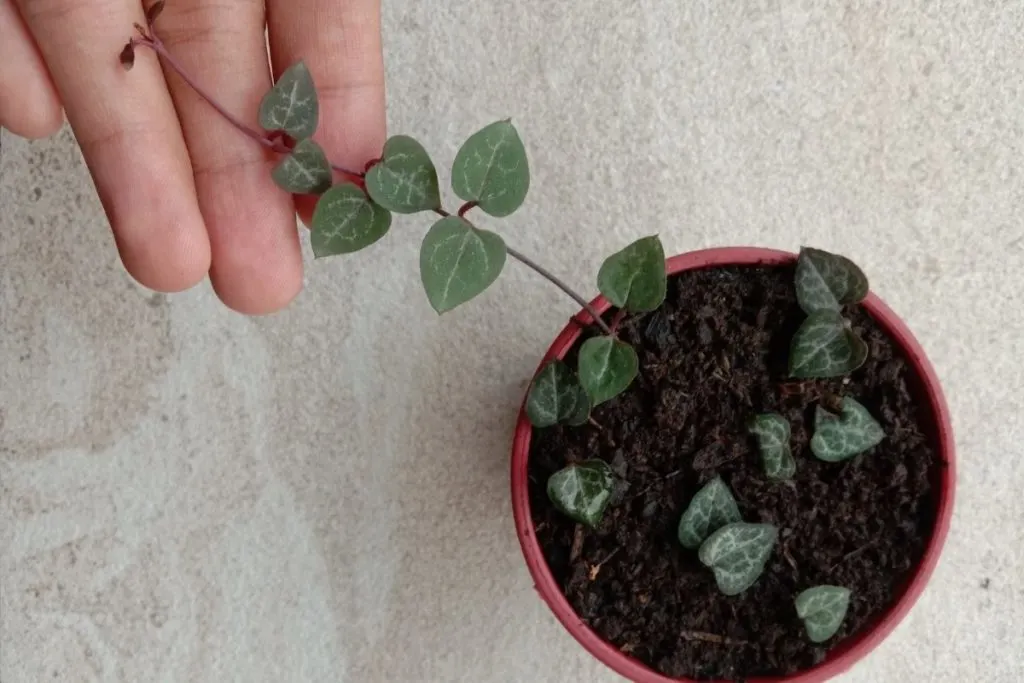
We will introduce you to three ways in which you can propagate strings that are not complicated.
We usually leave the transplant to people who are experts in plants, but that doesn’t have to be the case. Transplanting this string of hearts plant is easier than most plants.
These simple ways of propagating string can be applied by anyone, and below you can find out how to get a new plant:
1. Method of propagation in water
2. Method of propagation in the soil
3. Method of propagation by tubers
1. Method Of Propagation In Water
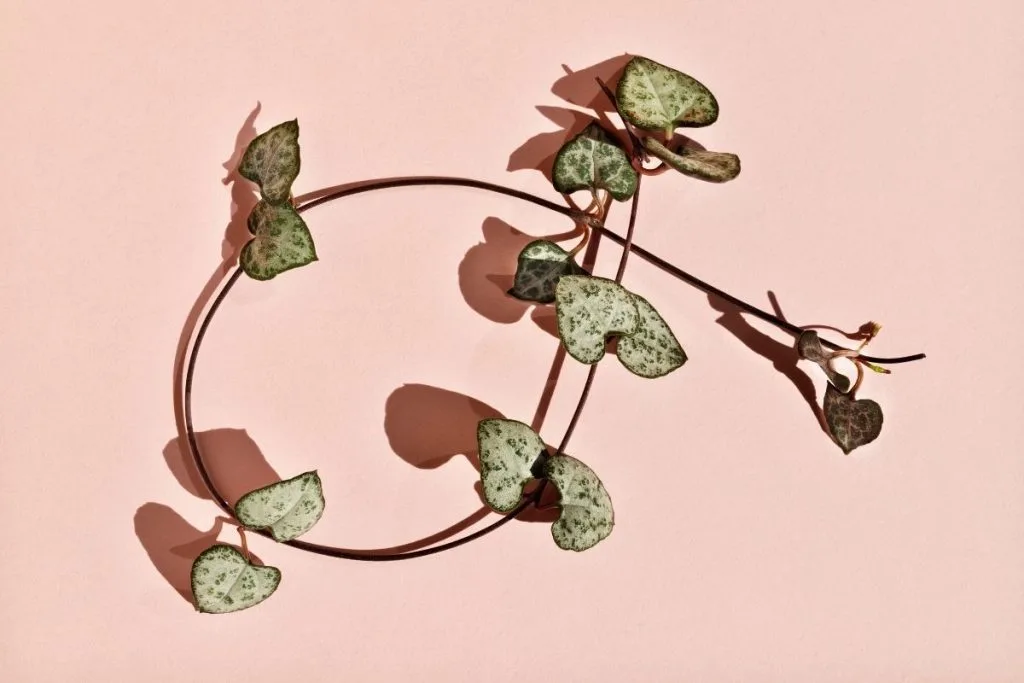
You will not go wrong if you decide to apply the method of propagation in water because it is very simple.
To propagate string with the water propagation method, all you need to do is cut off the part of the vine you want to transplant and put it in a container with water.
Ideally, it should be a glass vase so that it can get enough light and develop a root quickly. If the vase is in a place where it has the right temperature and enough bright indirect light, the roots will appear in just a few days.
The conditions in which the vase with the cut vine is located affect the speed of root development. If there is a lack of heat or light, the root development process will take longer.
2. Method Of Propagation In The Soil

If you choose the soil propagation method, it is done as follows. When soil propagation is applied, you also cut the desired sweetheart vine. What follows is quite different from the previous method.
You need to remove the leaves from the vine on the part that you will lay in the ground. All nodes, ie the places where the leaves were, must be covered with soil so that the roots can develop.
Also, a pot with a transplanted vine should be placed in a well-lit place and watered once a week so that the soil is always slightly moist.
3. Method Of Propagation By Tubers

To apply the tuber propagation method, it would be best to find as large a tuber as possible. Press it into the ground or simply leave it on the vine to grow the root.
When the root has grown, simply cut the vine from the mother plant. You can also remove the vine with a tuber. Simply place it in a pot with soil and cover the tuber with the soil mix.
As we wrote about the previous two methods when transplanted by the tuber method, leave the pot in a sunny place. Water it once a week to have slightly moist soil.
The tuber should grow roots in a few weeks.
When Should I Transplant The Plant?
If you think the pot in which your string of hearts has grown is small, make sure you transplant it to a new pot. Transplant it in the summer to avoid possible consequences.
It is a period when the string of hearts is actively growing. The growing season is from May to August, and then it would be most favorable to do so.
Transferring plants to a new pot during the winter months should be avoided.
Another interesting string plant is the string of dolphins. Learn with us how to propagate string of dolphins.
What Can I Do To Make My Plant Fuller And Richer?
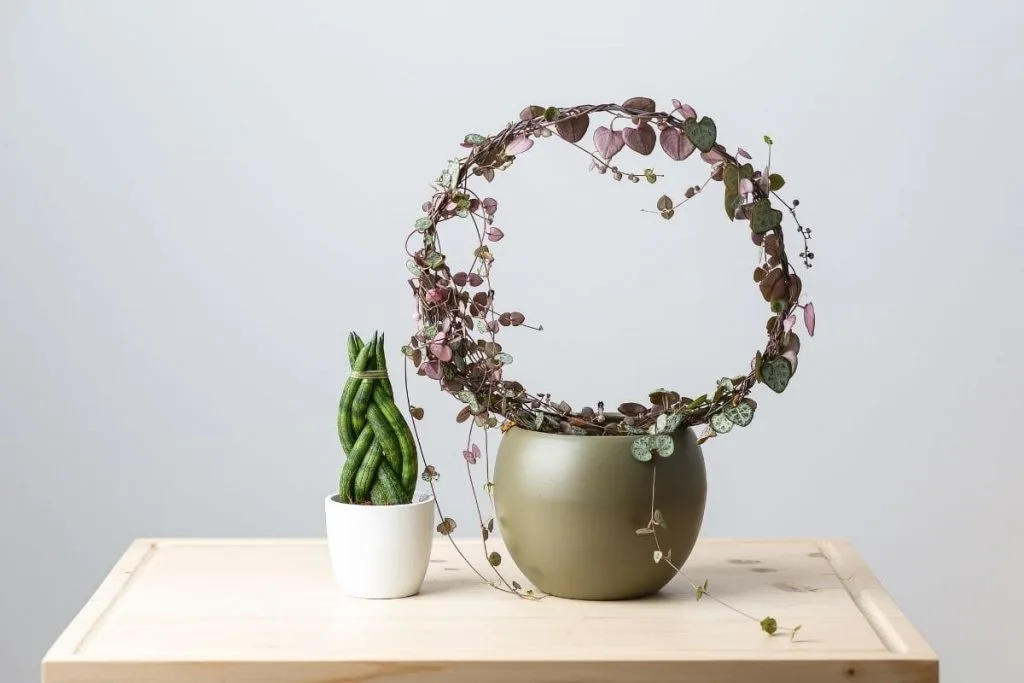
Many people do not dare to prune their plants because they think it will damage them. When it comes to this plant, it is even desirable.
This is not something that is necessary, but your plant will be thicker. You will fill the large spaces between leaves, new growth will be this way more often.
It is only necessary if the stems become too long and the lighter parts of the leaves begin to disappear.
This is a simple way to make your plant lusher. This is a very simple process and anyone can do it. Simply cut one or more vines using a sharp knife.
Cut just below the nodes together with the stem. Using the method of propagation in water, first, let these vines take root before returning them to the pot.
Is The String Of Hearts A Child/Pet-Friendly Plant?
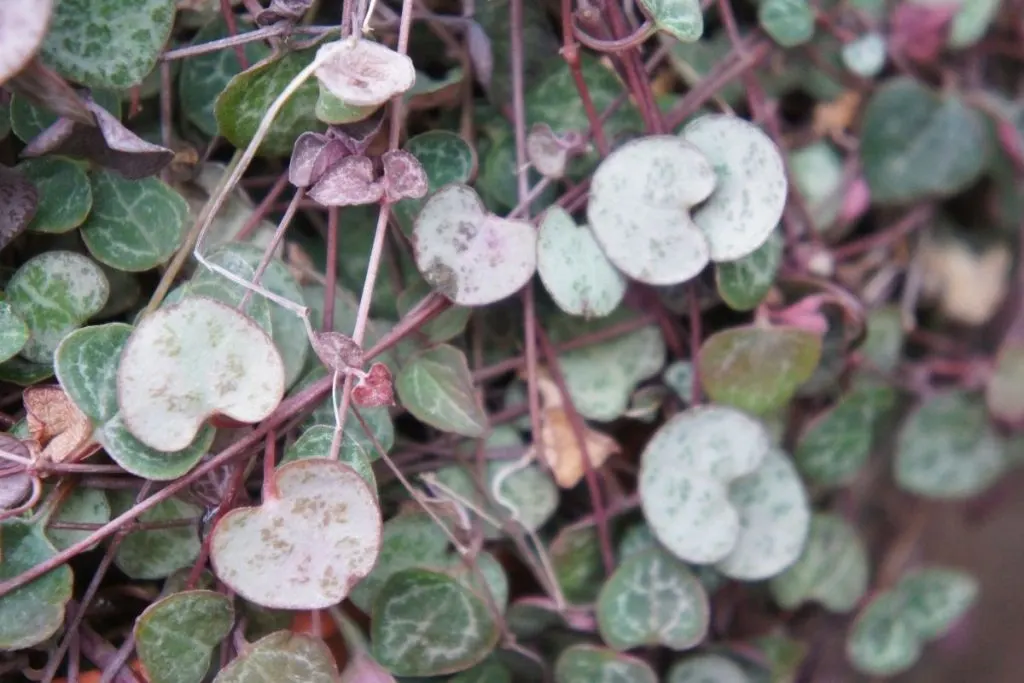
If you have small children or pets in your house such as dogs and cats, you can relax. There is really no need to worry about whether they can be poisoned by this plant because it is not toxic at all.
So be carefree and enjoy the beauty of this plant.
FAQ: String Of Hearts Plant – Rosary Vine
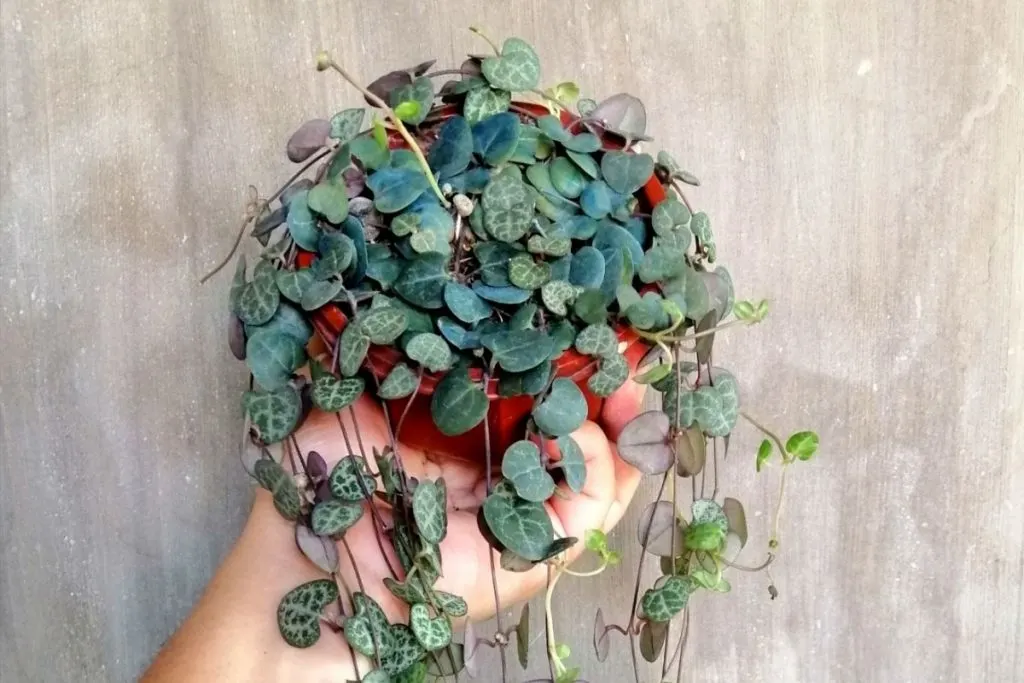
Even if you are a complete beginner when it comes to growing plants, just follow the instructions and you will not go wrong.
Here you will find everything related to the cultivation, maintenance, and propagation of this plant. We have tried to summarize the most important features.
In this article you will find everything you are interested in:
-starting from the origin of the plant, ie what species it belongs to,
-then what kind of soil does it like,
-how often and how it should be watered,
-what room humidity does it prefer,
-which temperatures are best for the String of hearts plant,
-what kind of lighting suits this plant,
-whether and when this plant should be fertilized,
-in what ways we can propagate this plant (three ways are described with explanation),
-how to transplant it and what to do to make it look very rich.
If you decide to beautify your home or workplace with this plant, we hope that you will be satisfied with the information we have provided to make it easier for you to cultivate it in the right way.


